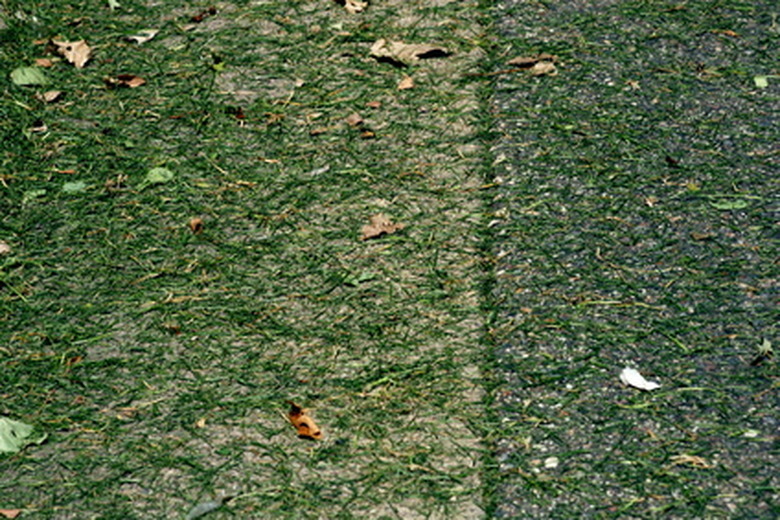What To Do About A Clumping Fescue?
Though tall fescue is utilized on its own as a grass in the home landscape, it is considered a pest when it displays itself in clumps in your bluegrass lawn. With a natural clumping habit and wide leaf blades, the presence of fescue dramatically diminishes the manicured appearance of your landscape.
Description
Tall fescue (Festuca arundinacea) is a cool-season perennial grass often used in pastures. With a preference for a temperature range of 60 to 75 degrees F, this clumping fescue often develops earlier than your bluegrass lawn. Clumping fescue thrives in well-drained soil high in fertility with an ideal pH of 5.5 to 6.5, but with a wide variety of tolerances, this grass adapts to most conditions.
Warning
Tall or clumping fescue is thought of as an invasive weed when it crops up in your home lawn. Its natural habit forms clumps that can grow up to 2 feet in diameter. Though you can remove individual clumps, bluegrass and the invading clumping fescue are cool-season perennials, meaning you need a selective herbicide that kills fescue but not bluegrass. Unfortunately, selective herbicides are not available to the home gardener for application to fescue, so spot treatment is necessary.
- Though tall fescue is utilized on its own as a grass in the home landscape, it is considered a pest when it displays itself in clumps in your bluegrass lawn.
- With a preference for a temperature range of 60 to 75 degrees F, this clumping fescue often develops earlier than your bluegrass lawn.
Effects
A previously manicured, uniform lawn looks aesthetically unappealing when it is invaded by large clumps of grass that display a different texture. Along with cosmetic damage, fescue clumps are more challenging to mow than the rest of your lawn, creating maintenance difficulties. But the health of your bluegrass remains unaffected.
Prevention
To prevent the invasion of clumping fescue in your home lawn, keep your grass mowed to a height of approximately 2 to 3 inches. Mowing too closely creates an open, more vulnerable space that grasses and weeds can easily invade. If you notice a clump, dig it out by hand to prevent growth or to prevent it from expanding and joining other clumps.
Solution
For control of clumping fescue in home lawns, employ careful application of an herbicide. Use a chemical with the active ingredient glyphosate to spot-treat clumps. Keep in mind that since glyphosate is a non-selective herbicide, it kills all plant life it comes into contact with, including your lawn. The Colorado State University Extension suggests applying the herbicide in the shape of a rectangle for easy replacement with a new sod rectangle. For selective herbicide treatment, Tall Fescue Control is available for application by a licensed professional. It provides the best control during autumn, according to the Colorado State University Extension.
- A previously manicured, uniform lawn looks aesthetically unappealing when it is invaded by large clumps of grass that display a different texture.
- The Colorado State University Extension suggests applying the herbicide in the shape of a rectangle for easy replacement with a new sod rectangle.
